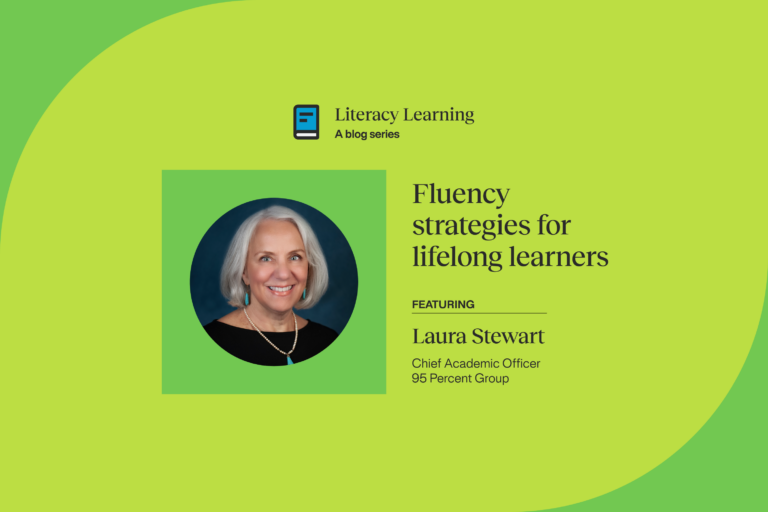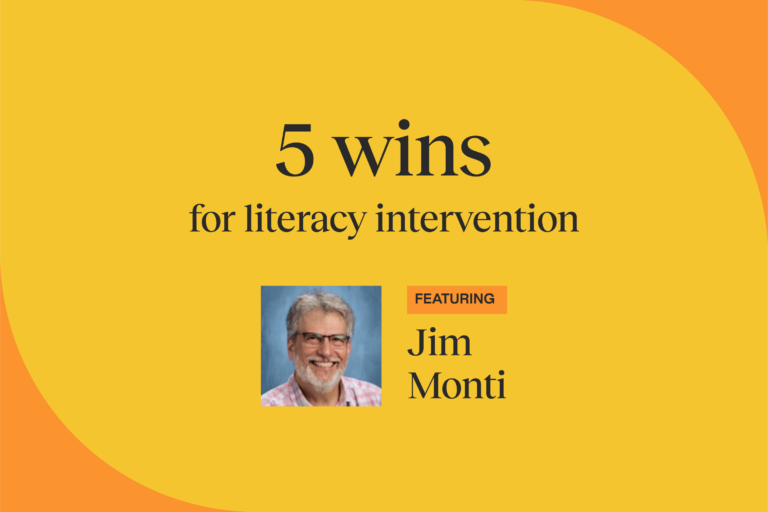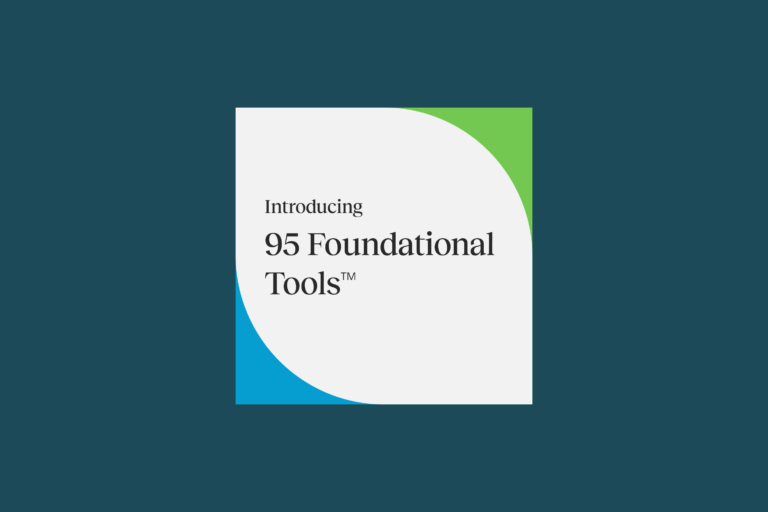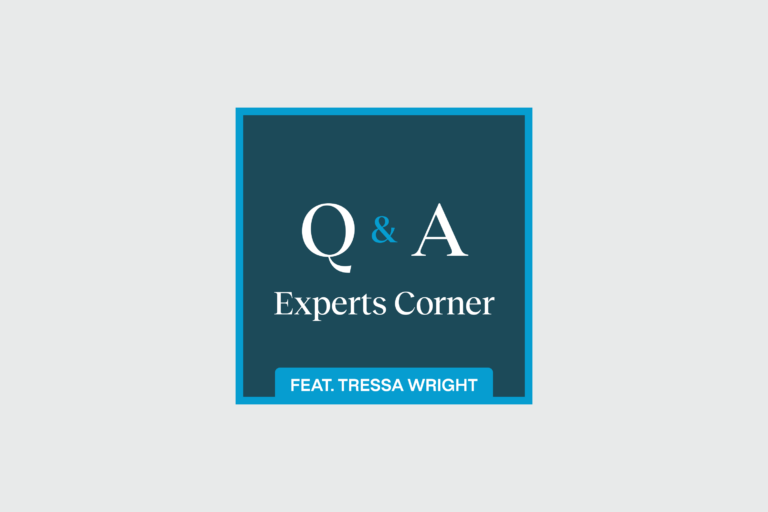Experts corner: The magic of morphemes

Morphology is indeed magical. Words magically appear in our lives and each word has its story, its hidden meaning for us to uncover and discover.
Dr. Deb Glaser
Dr. Deborah Glaser is a force in literacy education and evidence-based reading instruction. She is the author of The Reading Teacher’s Top Ten Tools: Instruction that Makes a Difference, an IDA-accredited online comprehensive course designed to immerse educators in the science of reading. We spoke with Dr. Glaser about Morpheme Magic, a program she designed to support students’ and teachers’ morphological awareness (grades 4-12) and Morphemes for Little Ones, for children in K-3.
Let’s start with some background.
What is morphological awareness?
Morphological awareness is the understanding of the structure of words and the way in which words are formed from roots, prefixes, and suffixes. It plays a crucial role in learning to read, facilitating vocabulary development, reading comprehension, and spelling abilities. It serves as a bridge between phonemic awareness and the broader aspects of reading proficiency. Research says that in some cases, morphological awareness is the sole or strongest predictor for reading and spelling ability.
What is the relationship between phonological awareness and morphological awareness?
Phonological awareness focuses on the sound structure of language and includes phonemic awareness—the ability to recognize and manipulate phonemes, the smallest units of sound that comprise the words we listen to and speak. Phoneme awareness has been proven to be critical to reading and spelling development.
Morphological awareness focuses on the meaning of words and how they can be broken down into morphemes, the smallest units of meaning. The relationship between phonological awareness and morphological awareness is complementary and developmental. As children’s decoding skills progress, their focus gradually shifts from decoding graphemes to phonemes within words to decoding larger units, the morphemes within words.
Why is morphological awareness important?
Studies have shown that students who possess a strong understanding of word morphology are better equipped to decode unfamiliar words, infer the meaning of new words, and understand complex texts. Morphological awareness has been identified as a key factor in supporting reading development across different languages, highlighting its universal importance in literacy education. By focusing on the morphological structure of words, educators can enhance students’ reading skills, providing them with tools to navigate increasingly challenging texts and expand their academic vocabulary.
Here are highlights from the conversation with Dr. Glaser.
What is the magic in Morpheme Magic?
Magic is that special unknown that begs to become known and understood. Morphology is magical. I created Morpheme Magic to give teachers what they need to bring the magic of language into their classrooms. My intention is to engage students (and their teachers) in a magical study of words, their meaningful parts, and captivating history. By building interest and curiosity about words, the systematic lessons guide teachers and students on a journey to become word scientists.
I’m not sure I know how to teach morphology!
I wrote this book for all the teachers who have told me they don’t know enough about morphology to teach it. Most teachers have a good sense of what morphology is and what morphemes are, but they don’t know how to teach it or why. If we don’t understand something or feel confident in our knowledge of a topic, we won’t teach it. This is why I tell teachers, “Morphology is something you can learn right along with your students, and the more you teach it the more confident you will feel and the more you will include morphology in your vocabulary and spelling lessons.” The curiosity about words that teachers model in the classroom will be contagious and students will begin to express curiosity too.
Who does Morpheme Magic serve?
Morpheme Magic is intended for grades 4 through 12.
The research is really clear that teaching about morphemes and morphology begins in earnest in fourth grade. That’s when children have reached what we call the consolidated level of word recognition. They’re starting to perceive chunks in words more readily—syllables and morphemes—and can analogize to help them read unfamiliar words. They’re reading a wider variety of texts which presents them with thousands of words they’ve never seen in print before—words they have possibly never used or are not part of their active vocabulary.
The power of morphology is that by learning one root, you can learn a whole word family. For example, if you know the word form means a shape, deform means “away from the shape.” You know that the family of words you can build around that root—deform, inform, formative, conform—helps grow your understanding in your vocabulary.
Initially, I designed Morpheme Magic for middle school—so for sixth, seventh, and eighth grade. However, once I put it out there, fourth and fifth grade teachers have really embraced it because finally they have a program they can use to teach intermediate grades word study in a systematic and explicit way. And then for high school, as I had hoped and planned, it is used effectively for intervention, especially for students with dyslexia.
Why Morphemes for Little Ones?
According to research, we now know that morphological awareness is growing and developing beginning in kindergarten and continues throughout the school years. After creating Morpheme Magic, I started getting requests from third grade teachers, second grade teachers, first grade teachers even. “Can I use Morpheme Magic with my kids?” I had to answer “No, that wouldn’t be very appropriate. Morpheme Magic is too sophisticated for the little ones, but let me see what I can do.”
Morphemes for Little Ones: Bring the Magic of Language into K-3 Classrooms guides teachers as they establish morphological awareness—the ability to identify, isolate, and manipulate morphemes in words during phonics lessons and throughout the day. I designed the lessons to help develop and grow language-rich classrooms. It is through a combination of implicit exposure and explicit and systematic instruction of morphology that young students gradually become aware of the language they speak.
Morphology is one of the most neglected language components. Students who have awareness of meaningful forms that make up words can recognize, decode, and access meaning more efficiently. When we teach decoding and encoding, we have the perfect opportunity to also teach awareness of morphemes.
What about assessments?
Morphemes for Little Ones contains an informal assessment for each of the three instructional levels. These are used for placement and progress monitoring. Morpheme Magic has an assessment for each lesson. These assessments are designed to assess individual morphemes, vocabulary, spelling, and morphological awareness. I created the Morpheme Magic assessments to be teaching tools for teachers. Teachers will gain ideas from the assessment questions to guide instruction of lessons and any vocabulary. Students will not only assess their own learning but add to their learning!
Assessment outcomes will:
- Guide teachers to know what to teach to prepare students for the assessment.
- Inform teachers about how well students’ language, vocabulary, encoding, and morphological awareness is developing.
- Deepen student understanding and awareness of morphology by making the assessments instructional as well.
- Help students understand how well their learning about morphology is growing.
Where do Morpheme Magic and Morphemes for Little Ones fit in the One95 Literacy Ecosystem™?

Morphological awareness plays an important role in helping learners decode, build reading fluency and comprehension skills, and develop a strong vocabulary. Research shows that morphological awareness is a strong contributor to reading proficiency.
Laura Stewart
Morpheme Magic complements the 95 Phonics Core Program® and the Tier 2, small group Vocabulary Surge®, working seamlessly for Tier 1 group instruction and Tier 2 Intervention. Morphemes for Little Ones with its foundational learning (suffixes, prefixes, Anglo-Saxon, Latin roots) sets students up for reading and comprehension success, building curiosity for words.
- 95 Phonics Core Program—Tier 1 structured literacy solution with morphology themes for K-5
- Morpheme Magic—targeted, explicit morphology instruction for grades 4-6 Tier 1 and grades 6-12 Tier 2 Intervention
- Vocabulary Surge—Tier 2, small group, hands-on, explicit morphology program for students needing additional support
- Morphemes for Little Ones—systematic, structured literacy lessons to help teachers teach morphological awareness for K-3 to prepare students for advanced word study in grades 4 and up
Learn more
If you are interested in any of the phonics, morphology, and vocabulary resources we have at 95 Percent Group, and our extensive professional learning and coaching offerings, please contact us today!
References
Apel, Kenn & Diehm, Emily. (2013). Morphological Awareness Intervention With Kindergarteners and First and Second Grade Students From Low SES Homes: A Small Efficacy Study. Journal of learning disabilities. 47. 10.1177/0022219413509964.
Bowers, Peter & Kirby, John & Deacon, Hélène. (2010). Bowers, P. N., Kirby, J. R., & Deacon, S. H. (2010). The effects of morphological instruction on literacy skills: A systematic review of the literature. Review of Educational Research, 80, 144-179.. Review of Educational Research. 80. 144-179.
Carlisle, Joanne. (2010). Effects of Instruction in Morphological Awareness on Literacy Achievement: An Integrative Review. Reading Research Quarterly. 45. 10.1598/RRQ.45.4.5.
Kieffer, Michael & Lesaux, Nonie. (2008). The role of morphology in the reading comprehension of Spanish-speaking English Language Learners. Reading and Writing. 21. 783-804. 10.1007/s11145-007-9092-8.
Nagy, William & Berninger, Virginia & Abbott, Robert. (2006). Contributions of Morphology Beyond Phonology to Literacy Outcomes of Upper Elementary and Middle-School Students. Journal of Educational Psychology – J EDUC PSYCHOL. 98. 10.1037/0022-0663.98.1.134.



